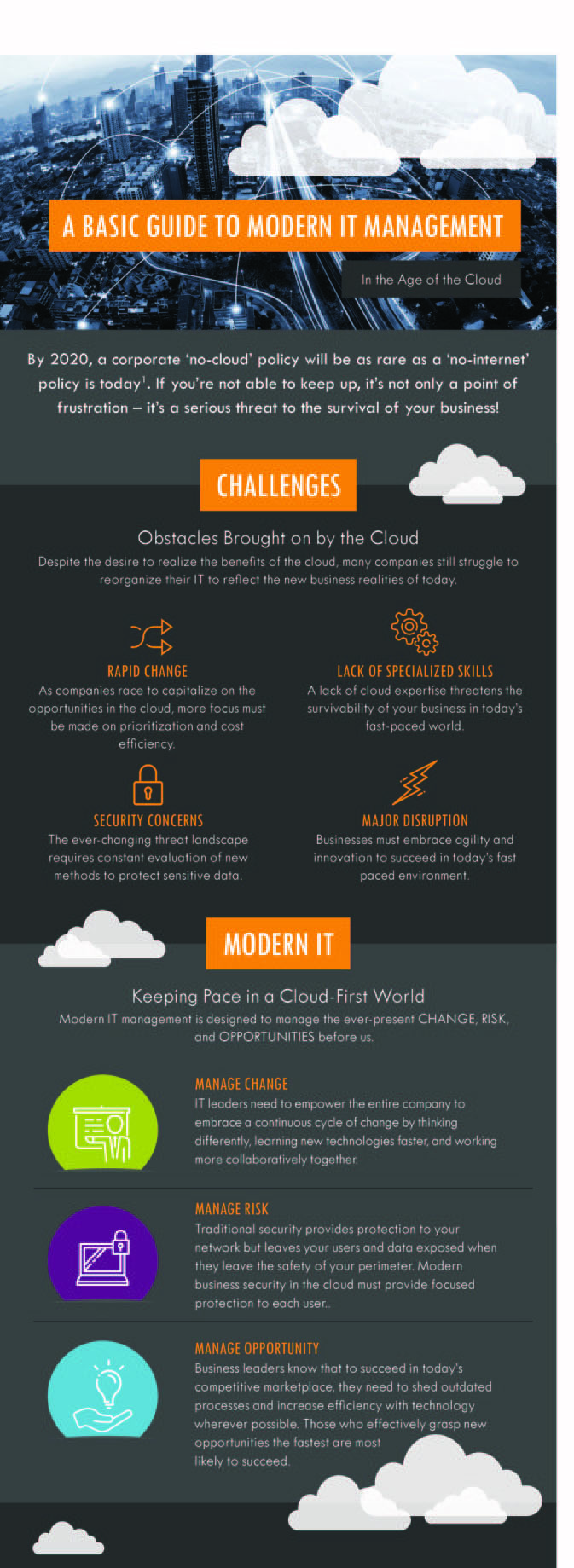A Basic Guide to Modern IT Management [INFOGRAPHIC]
A Basic Guide to Modern IT Management [INFOGRAPHIC]
The cloud is transforming business faster and more pervasively than any other technology in history. Gartner predicts that by 2020, “a corporate ‘no-cloud’ policy will be as rare as a ‘no-internet’ policy is today.” The leading tech research firm further asserted that the cloud is “the most disruptive force in IT since the beginning of the digital age.”
Despite the desire to realize the benefits of the cloud, many companies still struggle to organize IT to take advantage of and adapt to the new business realities of today.
Your organization is most likely already feeling many of the challenges brought on by the cloud:
- Rapid change: As companies race to capitalize on opportunities in the cloud, attention must be paid to the prioritization and cost efficiency of potential solutions.
- Lack of specialized skills: A lack of cloud expertise threatens the survivability of your business in today’s complex digital world.
- Security concerns: The ever-changing threat landscape requires the constant evaluation of new methods to protect sensitive data.
- Major disruption: Businesses must embrace agility and innovation to succeed in today’s fast-paced environment.
Modern IT – Keeping Pace in a Cloud-First World
For many IT organizations, meeting growing business demands means developing in-house talent, as well as seeking external partnerships to provide the depth and breadth of skills and experience required today. Outsourced partners will need to work seamlessly with internal IT and business leaders to provide constant assessment and re-prioritization of efforts in order to optimize overall business objectives. To gain a broader strategy, Modern IT management is designed to manage the ever-present change, risk, and opportunities before us.
- Manage Change: IT leaders need to empower the entire company to embrace a continuous cycle of change by thinking differently, learning new technologies faster, and working more collaboratively together.
- Manage Risk: Traditional security provides protection to your network but leaves your users and data exposed when they leave the safety of your perimeter. Modern business security in the cloud must provide focused protection to each user.
- Manage Opportunity: Business leaders know that to succeed in today’s competitive marketplace, they need to shed outdated processes and increase efficiency with technology wherever possible. Those who effectively grasp new opportunities the fastest are most likely to succeed.



SHARE